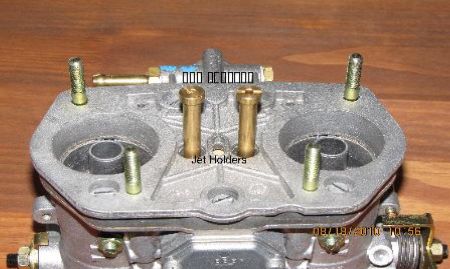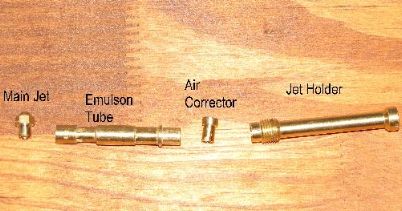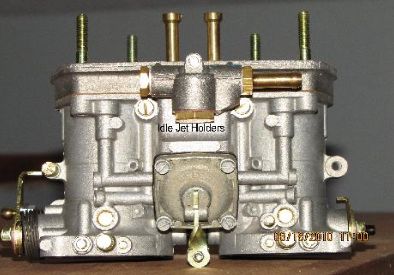Weber Flat Spot Jet Package Installation Instructions
BEFORE YOU BEGIN:
This jet package is designed to solve the flat spot between 2500-3200rpms when using the Weber 40 IDF Carburetors. The engine MUST BE in good working order before work begins; engine compression and leak down must be good, valves and ignition system must be correctly adjusted before work begins. Failure to ensure all these items are correct before work begins will affect the function of the carburetion system.
These instructions are intended for someone who is experienced in automotive repair and repair safety. Working on any fuel system requires that the engine be cold and to have a fire extinguisher present at all times. The work area must be kept extremely clean as if dirt enters the jet system it will seriously affect the operation of the fuel metering system. Clean all fuel spills immediately to eliminate the chance of a fire. If you do not feel comfortable with any of these instructions please take your vehicle to a licensed repair shop to have the jets installed.
Do not hesitate to call us at +1 (928) 255-2824 or email at info@partsklassik.com if you have any questions.
-
Step One: Remove the air filter assemblies on both carburetors. Locate the jet holders on top of the carburetors, (these will be the brass tubes sticking up out of the top of the carburetor), and using a flat
blade screw driver remove the complete jet holder.

- Step Two: Dis-assemble the jet package by simply pulling the jets out of the emulsion tube, (you may have to carefully use a pair of bull nose pliers to grip the jets). At this point you should check that the main jet and air corrector jet are correct. The main jet should be a .115 and the air corrector should be .200, the main jet is the one located at the bottom of the package and the air corrector is at the top. The sizes are stamped into the jet and should be easy to read, if you find that the sizes are not what is recommended please contact Porschetechnik and we will set up with the correct jets.

- Step Three: Carefully install the main jet and air corrector into the new emulsion tube, being careful to make sure that the main jet and air corrector jet are securely pushed into the tube and that the main jet is at the bottom of the tube and the air corrector at the top. (The top of the tube is identified by the raisedring that the jet holder sits against)

- Step Four: Carefully install the completed jet packages back into the carburetors, the jet package should be firmly nipped down. Be careful not to over torque or under torque the jet holder, if the jet holder is over torqued it may damage the main jet seat causing the jet to allow un-metered fuel into the main circuit causing the engine to run rich and requiring replacement of the entire carburetor. If the jet package is under torqued then the main jet will allow un-metered fuel into the system causing the engine to run rich. This condition is easily fixed by torquing the jet package correctly. Check that the air filters are clean and re-install correctly.
- Step Five: Locate the idle jet holders and using a flat blade screw driver remove the jet holder assembly being careful not to drop or lose the o-ring seal. The jet holders are located on the side of the carburetor on either side of the fuel inlet pipe; there are two holders per carburetor.

- Step Six: Remove the idle jet from the jet holder by simply pulling the jet out. To install the new jet simply push it into the jet holder making sure that it is a tight fit. If necessary carefully adjust the two tangs on the back of the jet to make a tight fit into the holder.
- Step Seven: Carefully install the jet holders with the new jets installed back into the carburetor, making sure that the o-rings are correctly installed. Start the engine and warm up to operating temperature and reset the idle and fuel mixture settings. As always when working on the fuel system carefully check your
work for any fuel leaks, take your time slowly set the fuel mixtures to the best idle